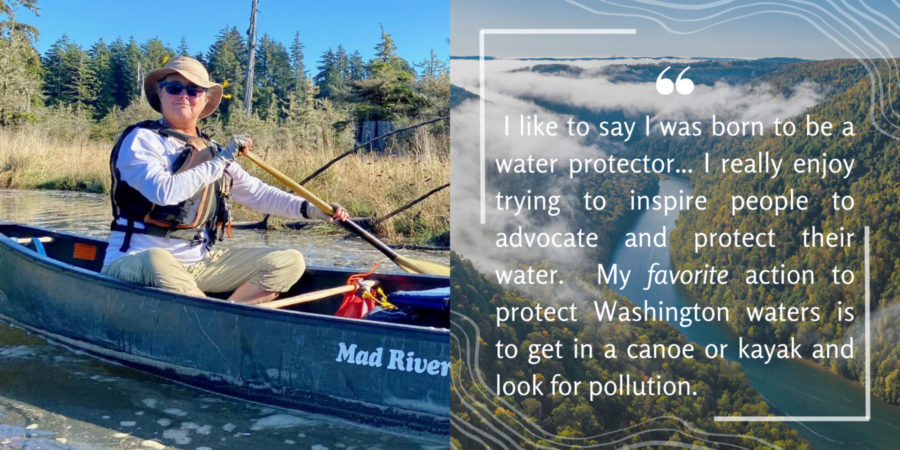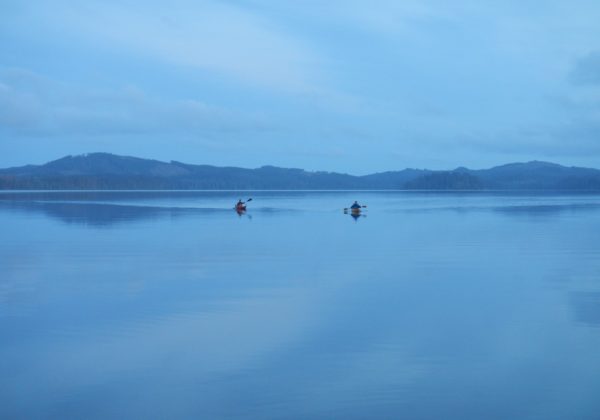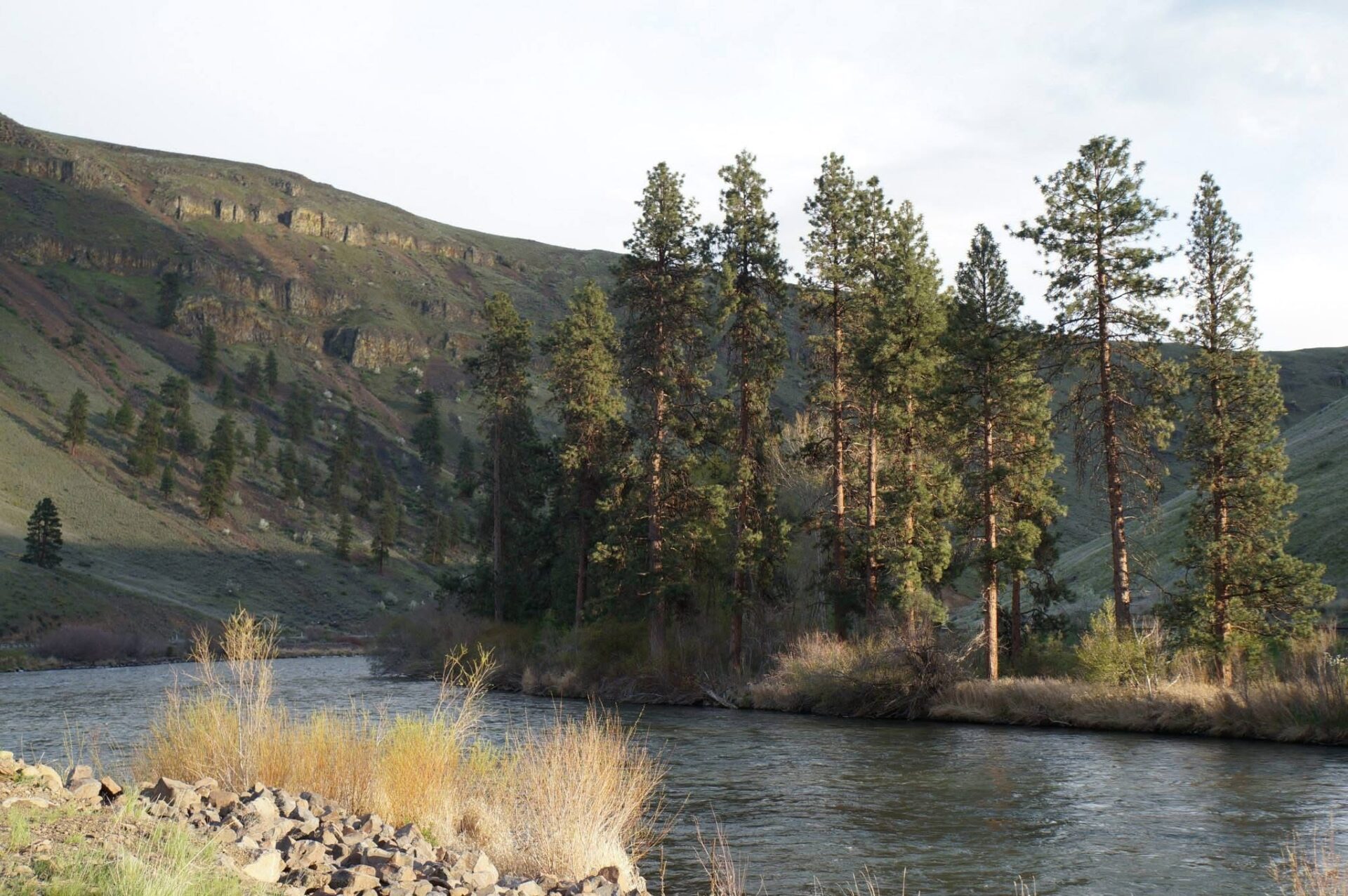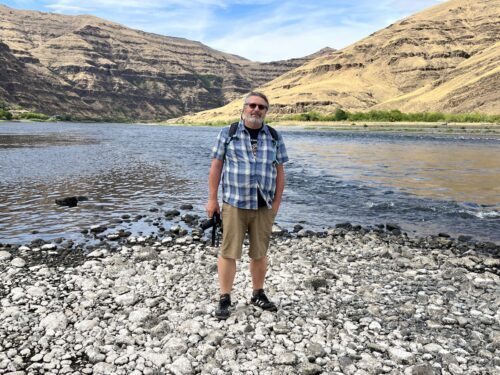A new proposed federal rule from the Trump Administration revives a long-standing effort to deregulate…

Lee First Shares Her Water Story
Lee First is co-founder and Waterkeeper of Twin Harbors Waterkeeper.
Please describe your relationship to water. Water became my obsession when I first got in a canoe at age 12. As a teenager, I spent my summers in northern Ontario at a canoe camp for girls. For the first two years of camp, we went on short trips through Chains of Lakes, but after that we ‘graduated’ to eight-week-long trips down rivers that flowed to James Bay (the southern tip of Hudson Bay in Ontario). We occasionally paddled through small towns, but these were wilderness trips—this was old fashioned camping! We cooked on fires, and didn’t have any lightweight fancy gear. We carried canoes and our gear over portages between lakes and around rapids.
This was in the early 1970s, and the land was mostly wild and pristine. Today, most of this area is now underwater due to dams and altered hydrology.
The scenery, the wildness, and the camaraderie amongst the people on those trips made a lifelong impression on me; ever since those summers at camp, long kayak and canoe expeditions have always been a big part of my life. I have undertaken 15 expeditions of over 25 days between the north end of Vancouver Island and Glacier Bay National Park in Alaska. My most recent trip was a 25 day expedition to Haida Gwaii (formerly Queen Charlotte Islands). I also indulge in white water kayaking, and I paddled the Grand Canyon in a kayak about six years ago.
The scenery, the wildness, and the camaraderie amongst the people on those trips made a lifelong impression on me; ever since those summers at camp, long kayak and canoe expeditions have always been a big part of my life.

How has water shaped the person you are today? I am obsessed with water. I live next to a river. I love it when it rains. I have nine raincoats, a drysuit, and a bunch of neoprene outfits for paddling in any kind of weather—I never cancel a trip because of weather (well, maybe I cancel due high winds).
Today, I live next to the Chehalis River; I try to walk there most days. It takes me 15 minutes to walk through big fields and a forested wetland to get to the river. And even when I am away from home, almost every day I walk or bike to a place where I can sit next to water. It’s like a meditation.
Rivers offer so much. Everyone should learn from rivers. Rivers move more than water—they move sediment and wood, and shape landscape processes.
Where is your favorite place (in Washington) to connect to the water? And how/through what activities? Lake Ozette, on the NW Coast, is currently my favorite place to connect to water. It’s the largest natural lake in Washington, located three miles from the Pacific Ocean. I have been on several canoe trips to camp on the shores of the lake, and there are trails from the lake to the ocean beaches. Four or five times a year I organize trips to Lake Ozette to inspire my friends to pick up marine debris from the ocean beaches.
My other favorite place is Ellsworth Creek—a small salmon creek that drains to Willapa Bay. It is in perfect condition, surrounded by ancient cedars. The stream has clean, beautiful gravel, and plenty of large woody debris to slow down the water and create wonderful salmon habitat. I try to walk up there several times a year, in all seasons.

What action(s) do you take to honor and protect Washington’s waters? I like to say I was born to be a water protector. As the Twin Harbors Waterkeeper I get to do a lot of tasks to protect water, just as I did in previous jobs as well; I worked as the North Sound Baykeeper and outreach person for Spokane Riverkeeper.
I really enjoy trying to inspire people to advocate and protect their water, but my favorite action to protect Washington waters is to get in a canoe or kayak and look for pollution. Waterkeepers patrol their waterways. My area is the Chehalis watershed, Grays Harbor, and Willapa Bay (and all tributaries thereof). When I’m on the water, I feel like I’m on drugs (good drugs!), but I also see problems first-hand. Such as cattle standing in the water adding manure and turbidity, trampling vegetation, and the like. I see new dumpsites, illegal wetland fills, unpermitted structures along the rivers, illegal fishing, fish kills, creosote timbers, derelict vessels, and large marine debris. I use a GPS unit and camera to document these problems, and file a report with the Washington Department of Ecology. I also track many industrial sites to make sure they are required to have an NPDES permit. Many in the Grays Harbor area are supposed to have this permit, but don’t, so I pester the Department of Ecology to require permit coverage.
11.
Lee First Shares Her Water Story



